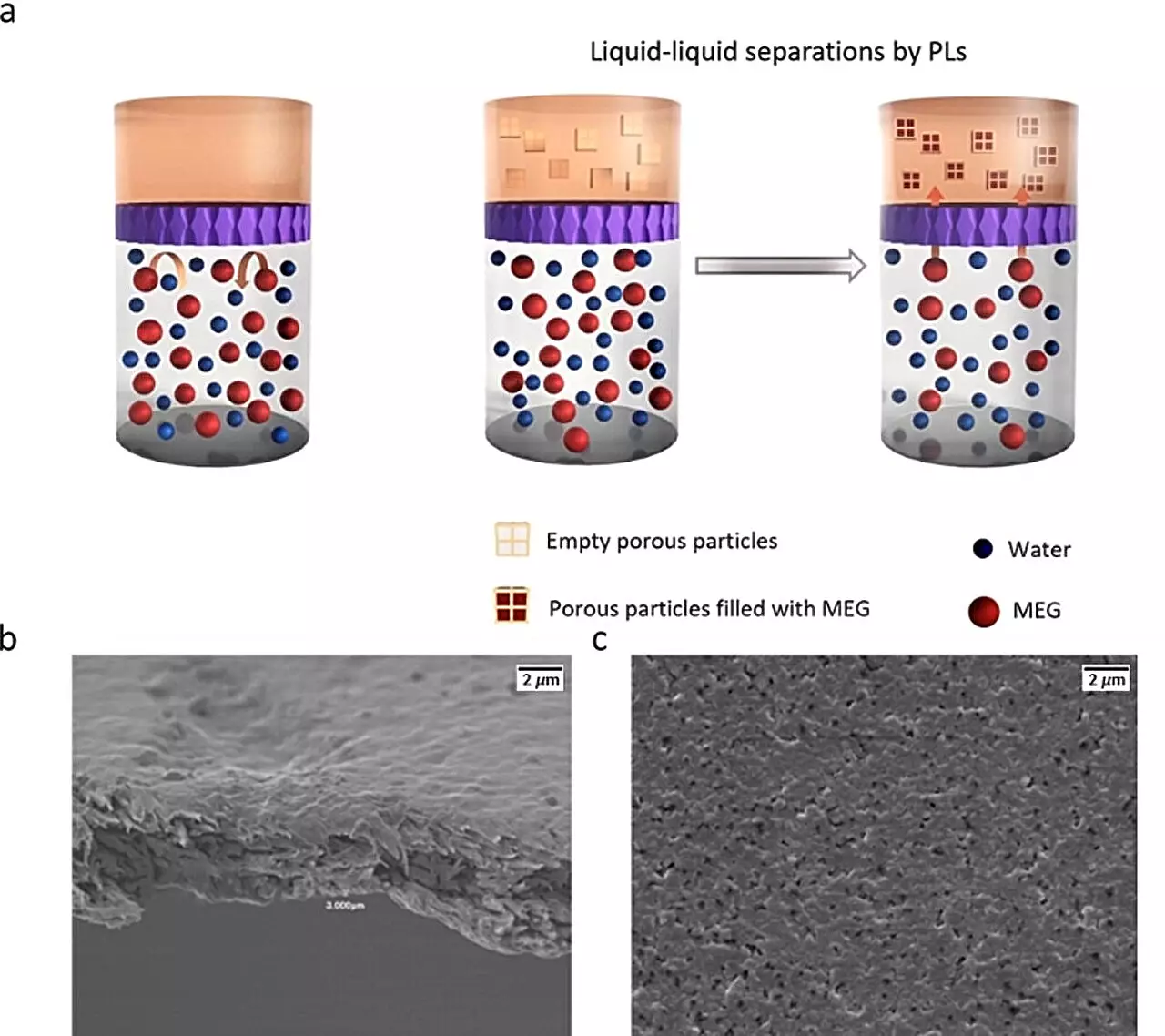Recent breakthroughs in the use of porous liquids (PLs) are disrupting traditional separation methodologies, offering promising applications that could significantly benefit both the environment and public health. Conducted by research teams at the University of Birmingham and Queen’s University Belfast, this cutting-edge study presents a novel approach to liquid-liquid separation that could transform multiple industries, notably aeronautics and beverage manufacturing. The findings, published in the journal Angewandte Chemie International Edition, indicate that PLs, characterized by their permanent cavities, are capable of selectively absorbing unwanted substances from mixtures—a feat previously unattainable on this scale.
Historically, the aeronautical sector has grappled with the environmental hazards related to the use of monoethylene glycol (MEG) as a de-icing agent. This viscous liquid, when mixed with water, creates a potentially toxic runoff that adversely affects local aquatic ecosystems. The research team’s innovative application of Type 3 porous liquids demonstrated an impressive ability to absorb MEG while leaving the water intact, achieving an absorption capacity that utilized up to 88% of the PL pore volume. This method not only addresses the storage issues of hazardous MEG-water mixtures, typically found at airports, but also presents a viable solution for their safe disposal or recycling.
Beyond environmental applications, the potential of porous liquids extends to the beverage industry, which is increasingly seeking ways to cater to health-conscious consumers. The research teams explored the effectiveness of a non-toxic, pH-resistant PL in reducing alcohol content in popular drinks like wine and gin. This low-alcohol processing method is groundbreaking, as it retains the sensory attributes of the original beverages, a significant barrier that many existing low-alcohol alternatives fail to overcome. Assistant Professor Deborah Crawford illuminated the prospects of this technology, stating that it could redefine product offerings in an industry that faces a growing demand for low-alcohol options that do not compromise on taste or experience.
The successful application of porous liquids in these case studies prompts a larger conversation about the versatility and scalability of this technology across various sectors. The ability to perform effective liquid-liquid extraction paves the way for further research into additional industrial applications, from food processing to pharmaceuticals. The sheer versatility of porous liquids signifies that their utility may soon extend beyond current applications, driven by the need for sustainable and effective extraction methods in an increasingly eco-conscious market.
The innovative use of porous liquids for liquid-liquid separation not only constitutes a significant scientific milestone but also opens doors to immense practical applications. From mitigating environmental impacts in aviation to revolutionizing beverage production, the implications of this research are profound. As industries globally continue to navigate the challenges posed by environmental regulations and consumer preferences, the adaptability of porous liquids could very well play a crucial role in shaping future sustainable practices. It is clear that this breakthrough is just the beginning; the potential for porous liquids is as expansive as the researchers’ vision for a more sustainable and innovative future.


Leave a Reply